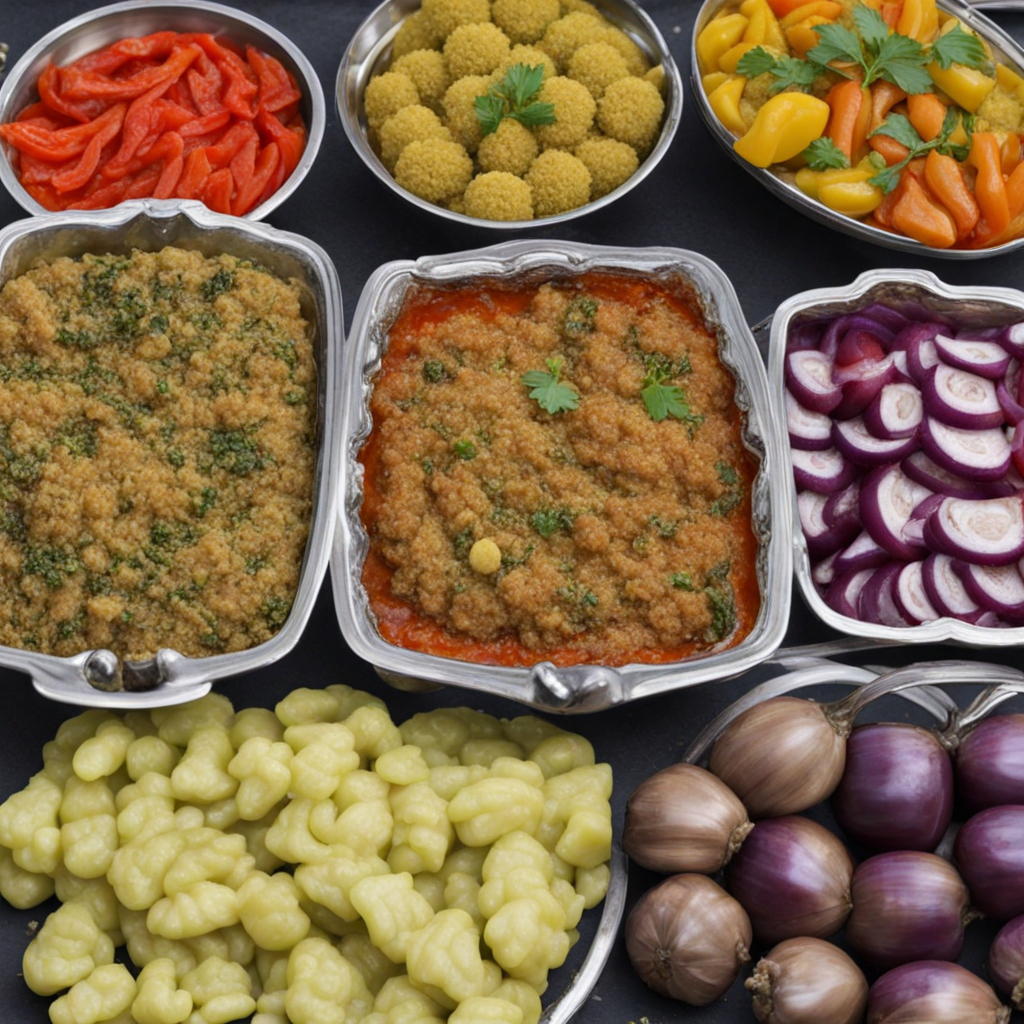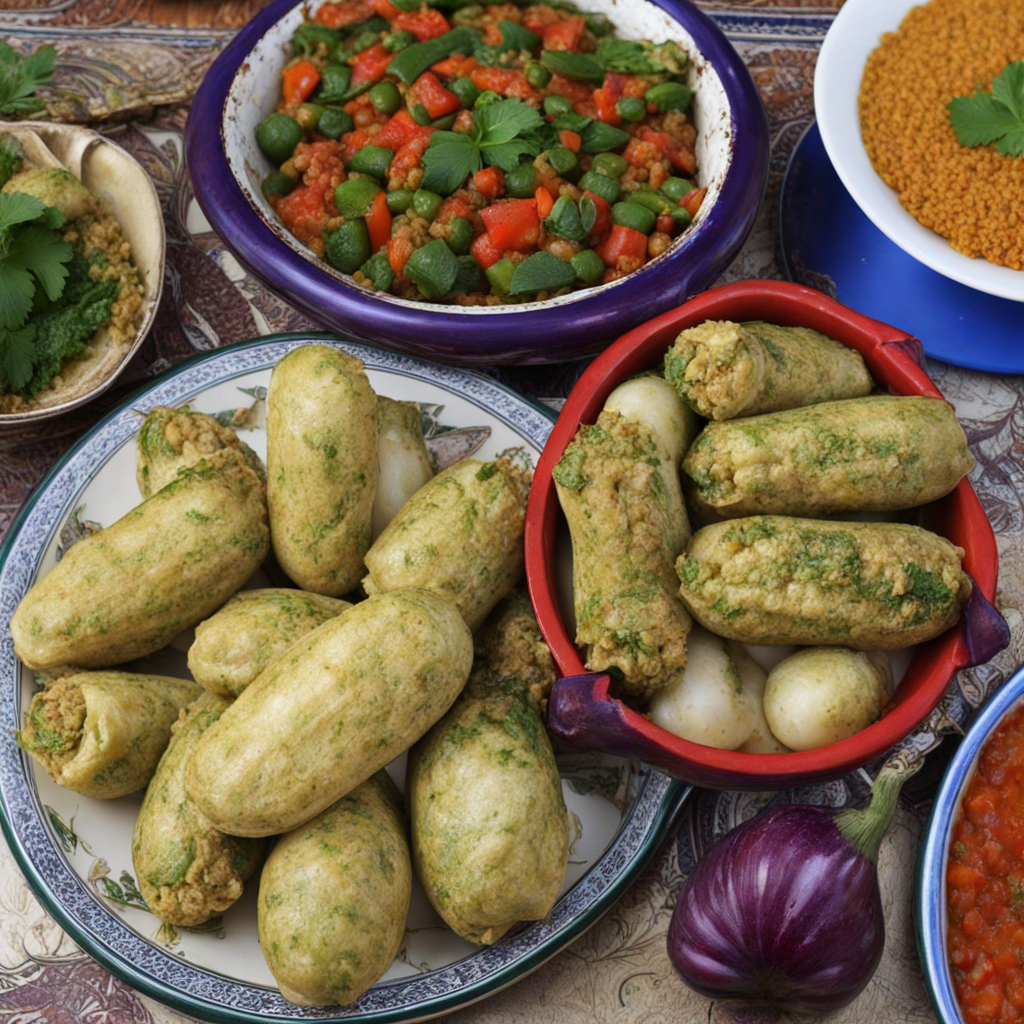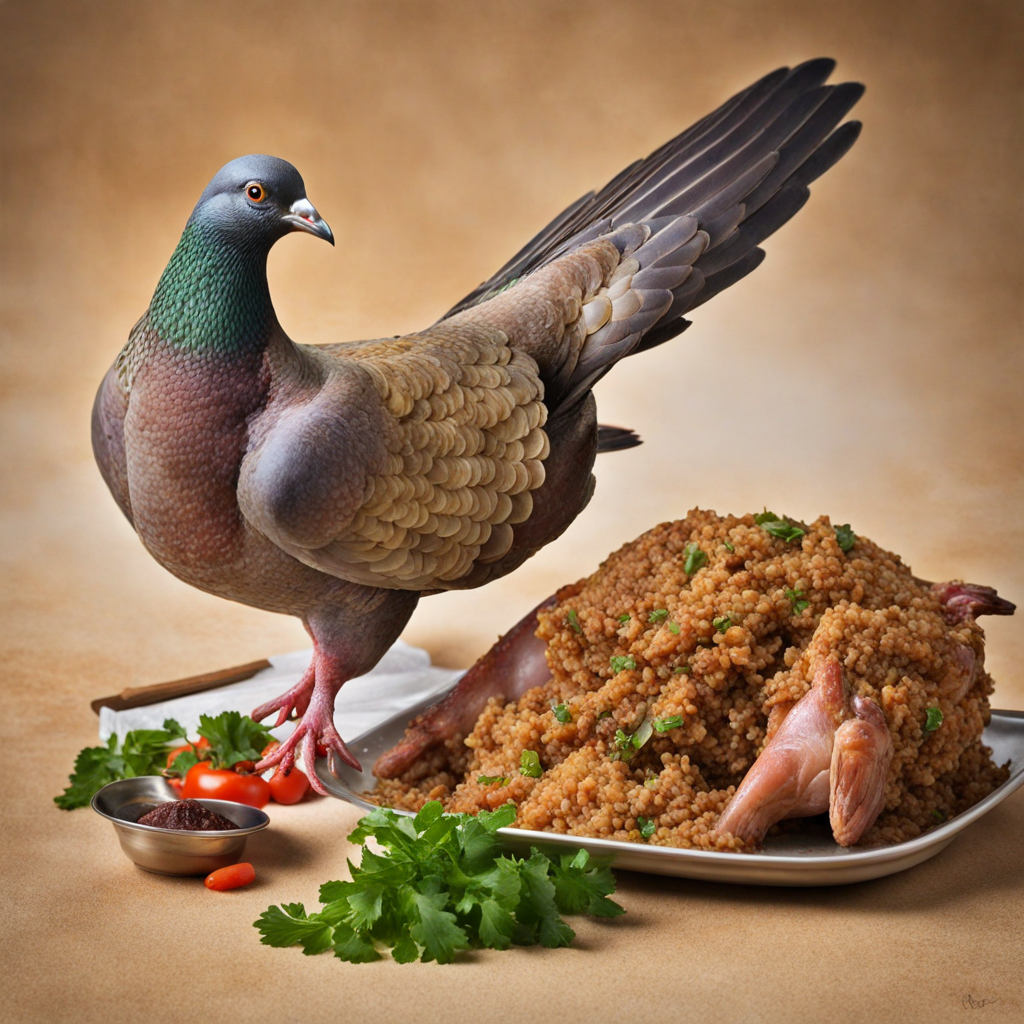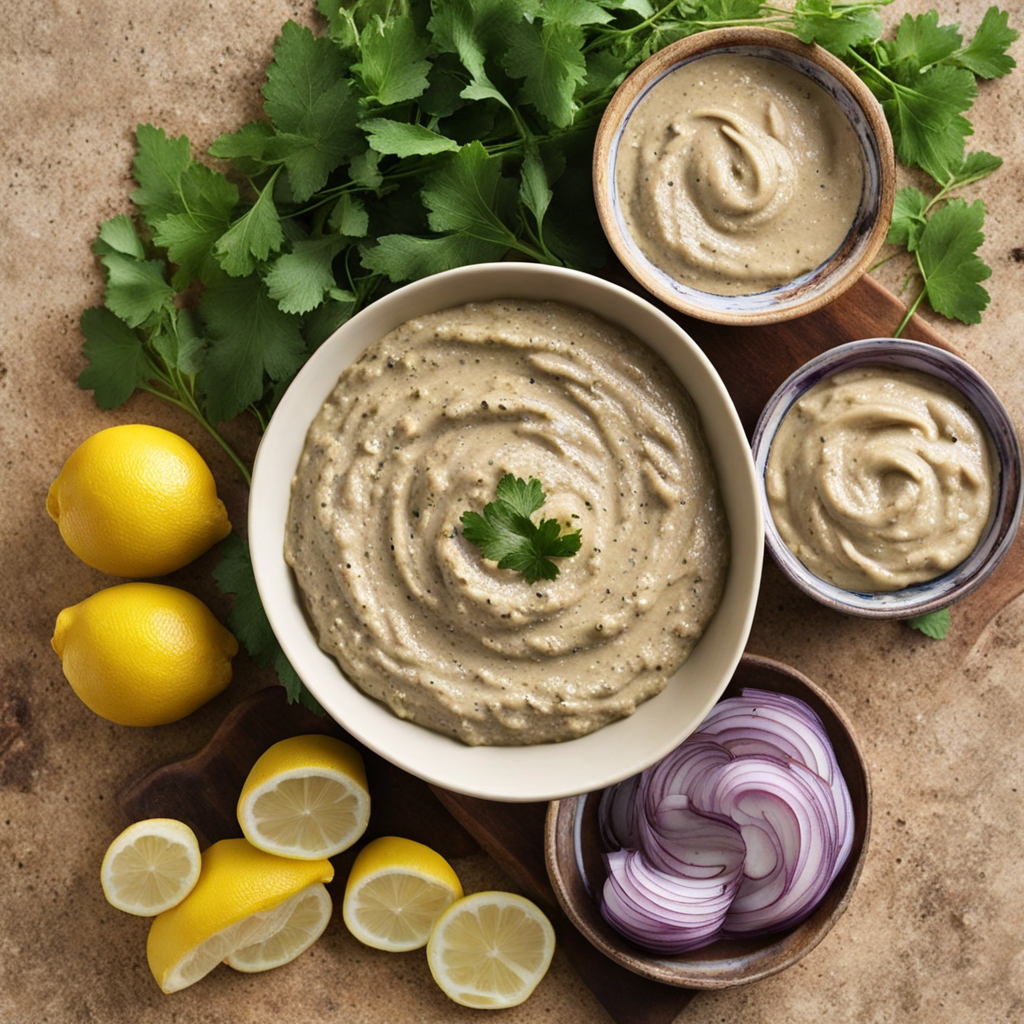Mahshi
Mahshi is a traditional Egyptian dish that showcases the rich and diverse flavors of Middle Eastern cuisine. Typically made with vegetables such as zucchini, eggplant, and bell peppers, Mahshi involves hollowing out these vegetables and stuffing them with a savory mixture of rice, herbs, and spices. The filling often includes ingredients like minced meat, tomatoes, and various aromatic spices, creating a deliciously fragrant dish that is both comforting and satisfying. The herbs used, such as dill and parsley, add a fresh brightness that balances the heartiness of the rice and meat. The preparation of Mahshi is a labor of love, as each vegetable must be carefully prepared and stuffed by hand. Once filled, the stuffed vegetables are arranged in a pot and simmered in a rich tomato sauce, allowing the flavors to meld beautifully. The slow cooking process ensures that the rice absorbs the sauce, resulting in a dish that is not only bursting with flavor but also has a delightful texture. The combination of tender vegetables and the seasoned filling creates an experience that is both hearty and wholesome, making it a beloved comfort food in Egyptian households. Mahshi is often served with a side of yogurt or a fresh salad, which complements the richness of the dish. Each bite reveals the layered flavors and textures, making it a delightful culinary adventure for anyone willing to explore the tastes of Egypt. Whether enjoyed at a family gathering or a festive occasion, Mahshi is a dish that embodies the warmth and hospitality of Egyptian culture, inviting you to savor the authentic flavors of this vibrant cuisine.
How It Became This Dish
The History of محشي: A Culinary Legacy from Egypt In the heart of Egyptian cuisine lies a dish that embodies the rich tapestry of the nation’s history, culture, and agricultural abundance: محشي (pronounced mahshi). This dish, which translates to "stuffed," is a beloved staple that has evolved over centuries, reflecting not just the tastes of the Egyptian palate but also the influences of various civilizations that have traversed the land along the Nile. Origins of محشي The origins of محشي are as ancient as Egypt itself. The practice of stuffing vegetables can be traced back to the Pharaonic era, where early Egyptians utilized the bountiful produce of their fertile land. The Nile's annual floods enriched the soil, allowing for an abundance of crops, particularly vegetables like zucchini, eggplant, peppers, and grape leaves. These ingredients became the canvas for a variety of fillings, often incorporating grains, legumes, and meats. While the exact date of the first محشي is hard to pinpoint, it is clear that the technique of stuffing food has roots in ancient culinary traditions. The Greeks and Romans, who were heavily influenced by Egyptian agricultural methods, also had their own variations of stuffed vegetables, suggesting a cultural exchange that enriched the culinary landscape of the Mediterranean. Cultural Significance محشي is not just a dish; it is a culinary emblem of Egyptian identity. It has transcended the boundaries of mere sustenance to become a symbol of family, hospitality, and celebration. Traditionally, it is served during family gatherings, weddings, and religious feasts, such as Ramadan and Eid. The act of preparing محشي often involves multiple generations, with recipes passed down through families, making it a vessel of cultural heritage and communal bonding. Moreover, محشي reflects the agricultural practices of Egypt. The dish showcases the seasonal produce available in local markets, emphasizing the connection between food and the land. This relationship underscores a larger narrative of sustainability and resourcefulness within Egyptian culture, as families make use of what is available to them, transforming simple ingredients into a hearty meal. Development Through Time As Egypt's history unfolded, so too did the recipe for محشي. The culinary landscape was shaped by the waves of conquest and migration that swept across the region. The introduction of spices and techniques from the Arab conquests in the 7th century brought new flavors to محشي. Spices like cinnamon, allspice, and cumin became integral to the seasoning of the rice and meat fillings, enhancing the dish's complexity. By the Ottoman era, which began in the 16th century, محشي had transformed into an even more elaborate dish. The Ottomans, known for their sophisticated culinary artistry, contributed to the refinement of stuffed vegetables. They introduced new ingredients, such as pine nuts and raisins, which added sweetness and texture. This period marked a significant evolution in the presentation and preparation of محشي, as it began to be served at banquets and royal feasts, elevating it to a dish of prestige. In contemporary Egypt, محشي has retained its traditional roots while also embracing modern culinary influences. Today, it is common to find variations that cater to diverse dietary preferences, including vegetarian and vegan options. The basic filling of rice, herbs, and spices can be adapted to include quinoa or bulgur, reflecting a growing awareness of health and nutrition among Egyptians. Regional Variations As with many traditional dishes, regional variations of محشي have emerged throughout Egypt. In Upper Egypt, for example, the filling may lean more heavily on herbs and spices, reflecting local agricultural practices and tastes. In Alexandria, coastal influences might introduce seafood into the mix, showcasing the versatility of the dish. Additionally, the use of different vegetables for stuffing varies by region—while zucchini and eggplant are common in many areas, grape leaves are particularly favored in some parts of the country. The Modern Table In modern Egypt, محشي is often served alongside other classic dishes, creating a rich tapestry of flavors on the dining table. It is commonly accompanied by tomato sauce or yogurt, which adds a refreshing contrast to the hearty stuffed vegetables. The popularity of محشي extends beyond homes and family gatherings; it is also a staple in restaurants and street food stalls, making it accessible to a wider audience. Moreover, محشي has garnered international attention, with Egyptian expatriates and food enthusiasts around the world seeking to recreate this dish in their own kitchens. The globalization of food culture has led to the emergence of fusion interpretations, where محشي is paired with ingredients or cooking techniques from different culinary traditions, further enriching its legacy. Conclusion The history of محشي is a reflection of Egypt’s agricultural heritage, cultural resilience, and the intricate interplay of various influences over millennia. From its ancient roots to its modern adaptations, it remains a cherished dish that brings families together, celebrates seasonal produce, and honors the traditions of Egyptian cuisine. As a testament to the enduring nature of food as a means of cultural expression, محشي will continue to thrive, inviting future generations to partake in the rich history and flavors of Egypt. In every bite of محشي, one can taste the echoes of the past, the warmth of family gatherings, and the vibrant spirit of a nation that treasures its culinary heritage.
You may like
Discover local flavors from Egypt







